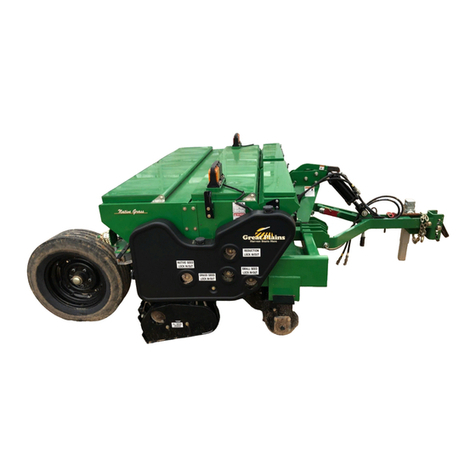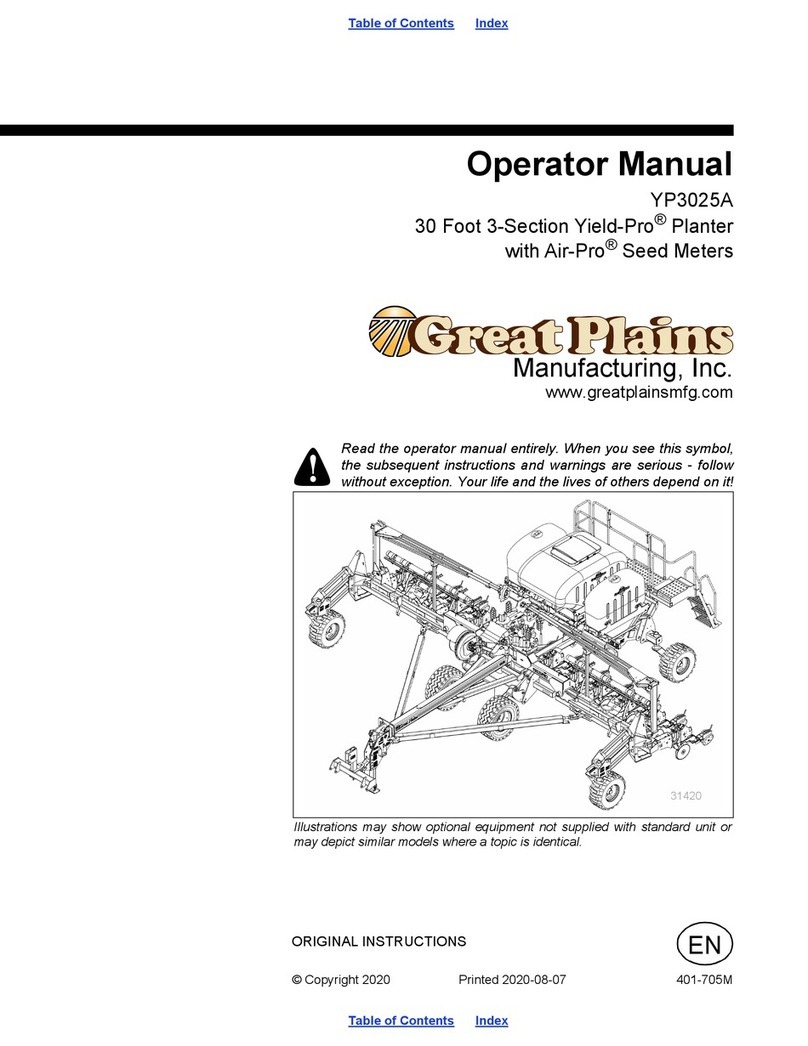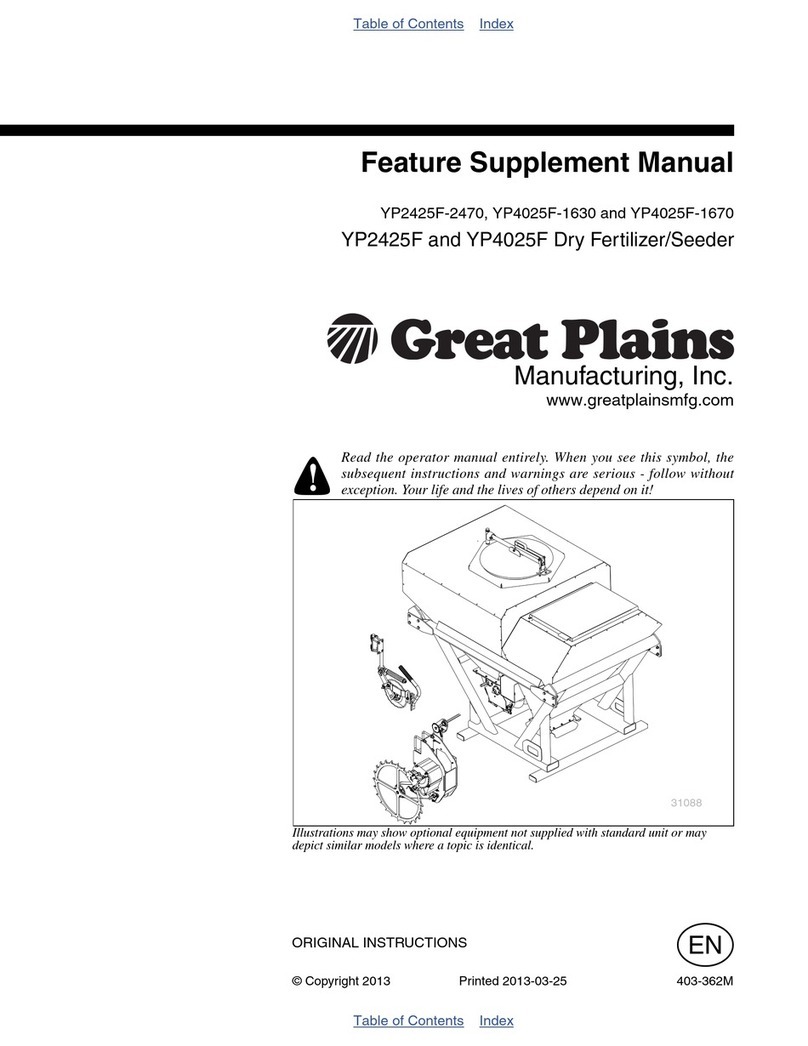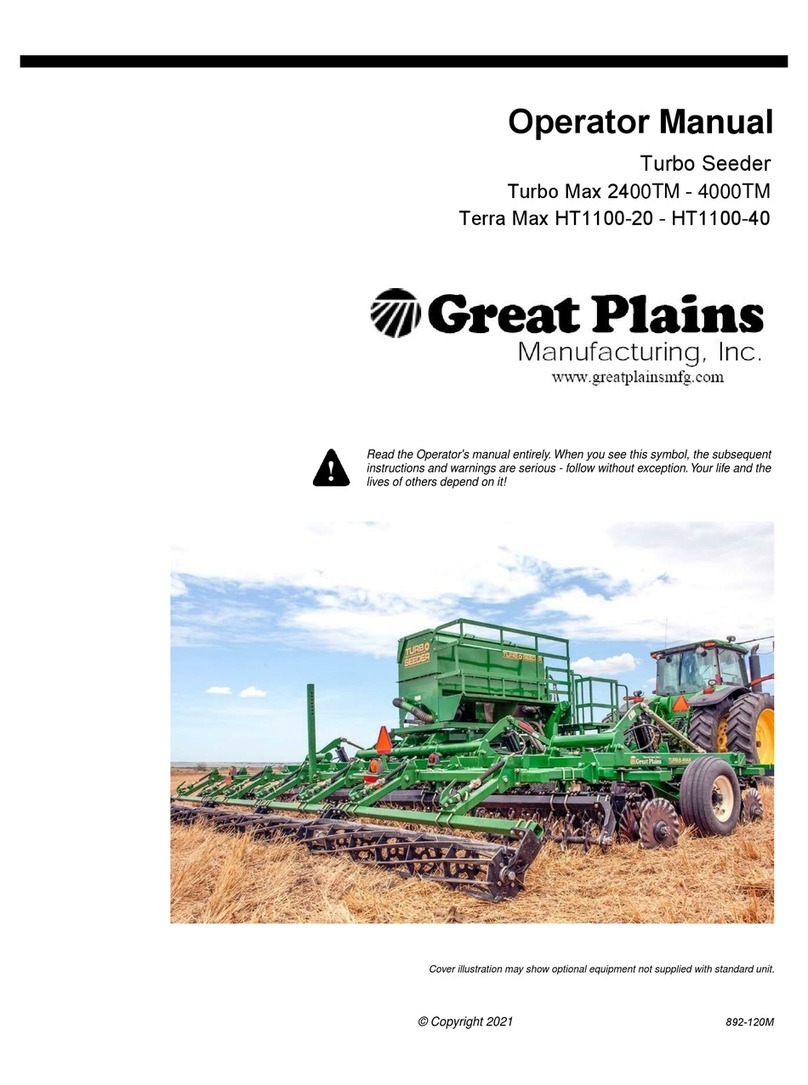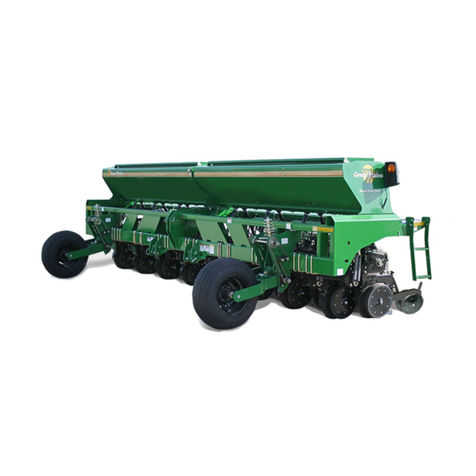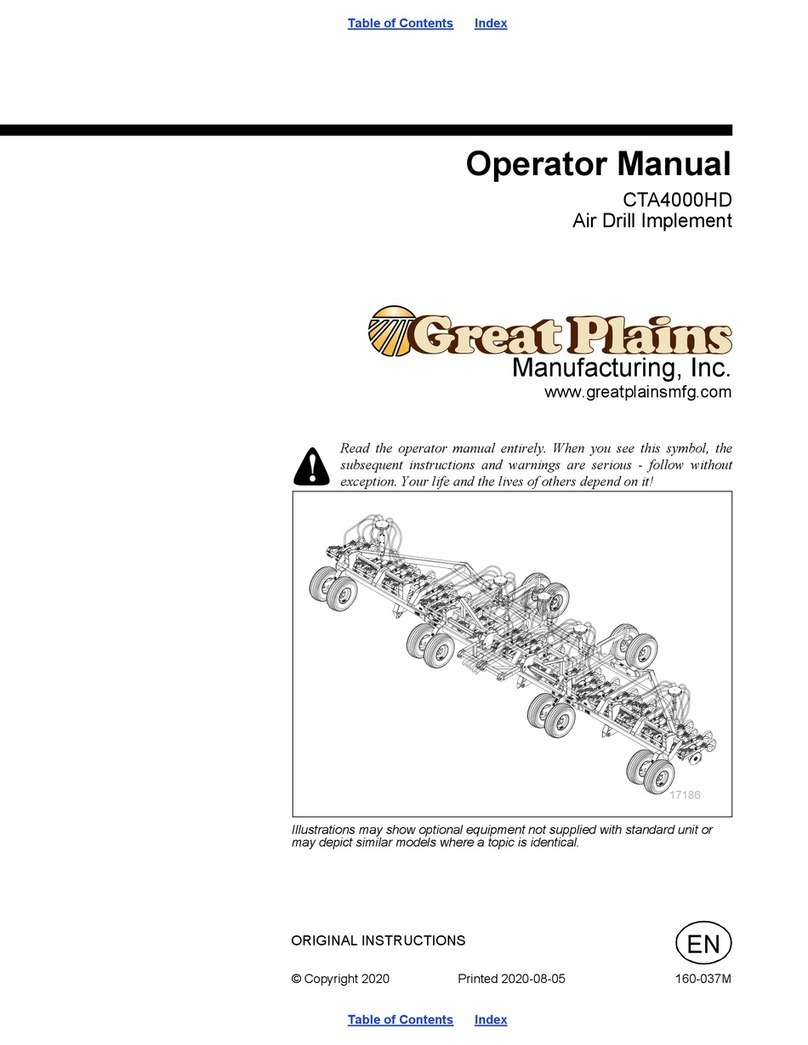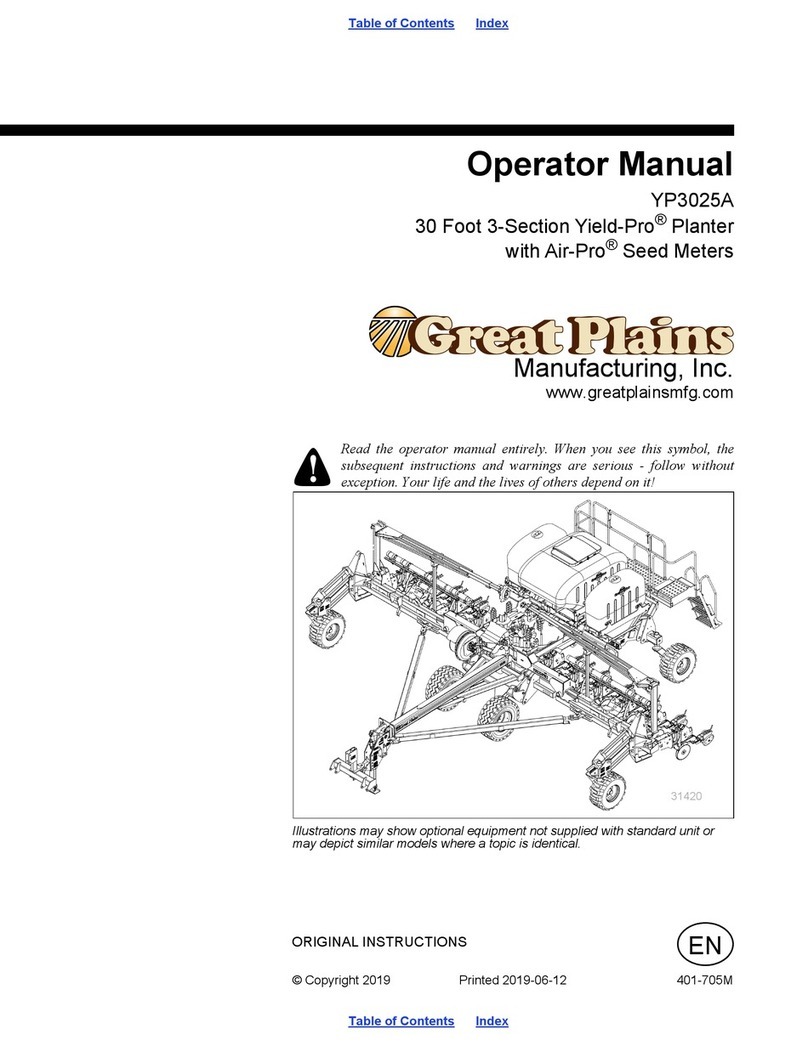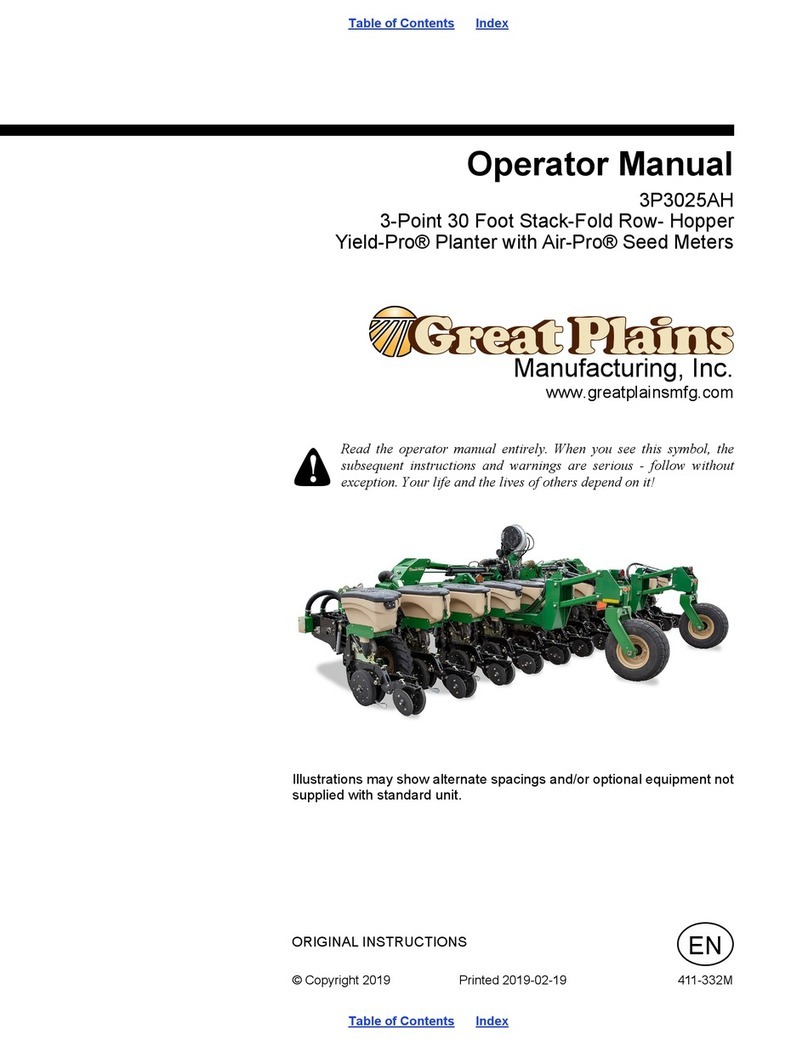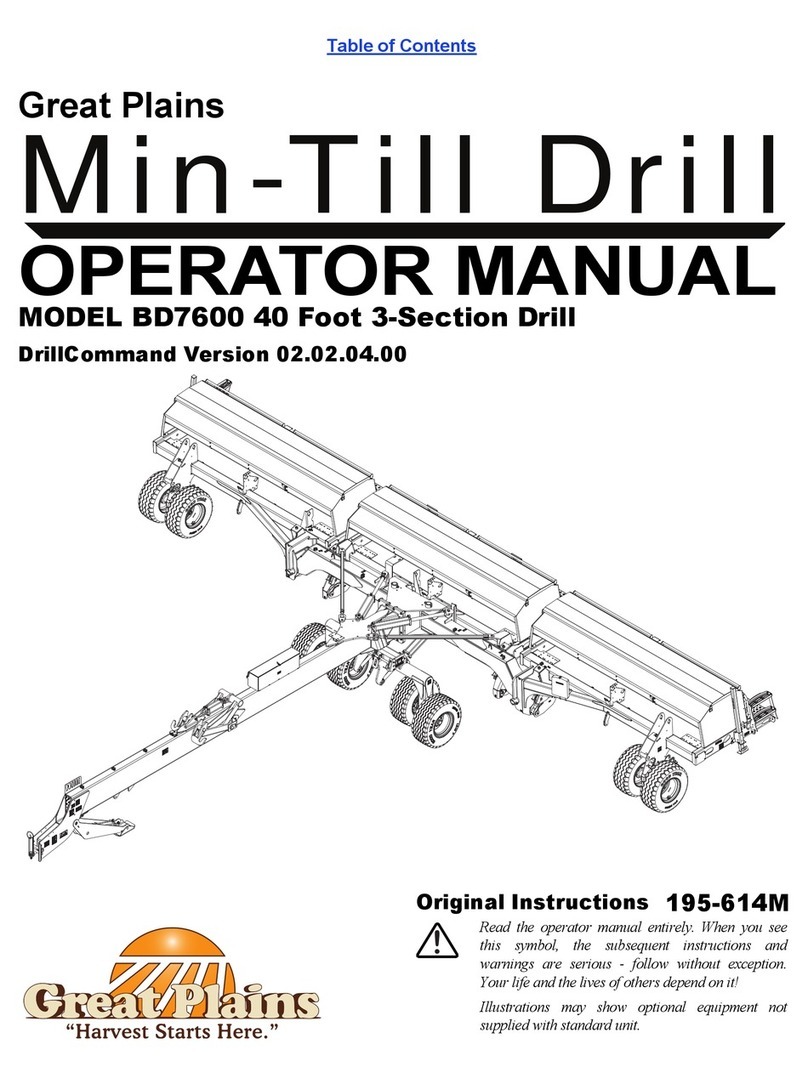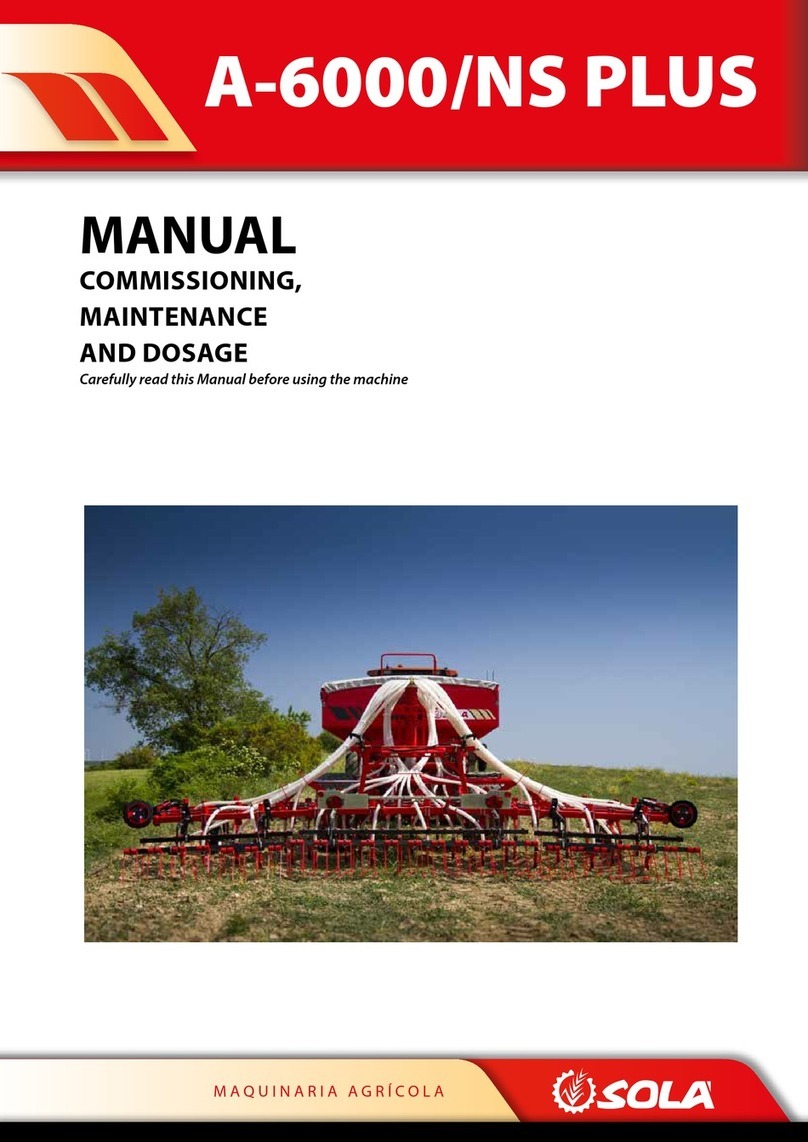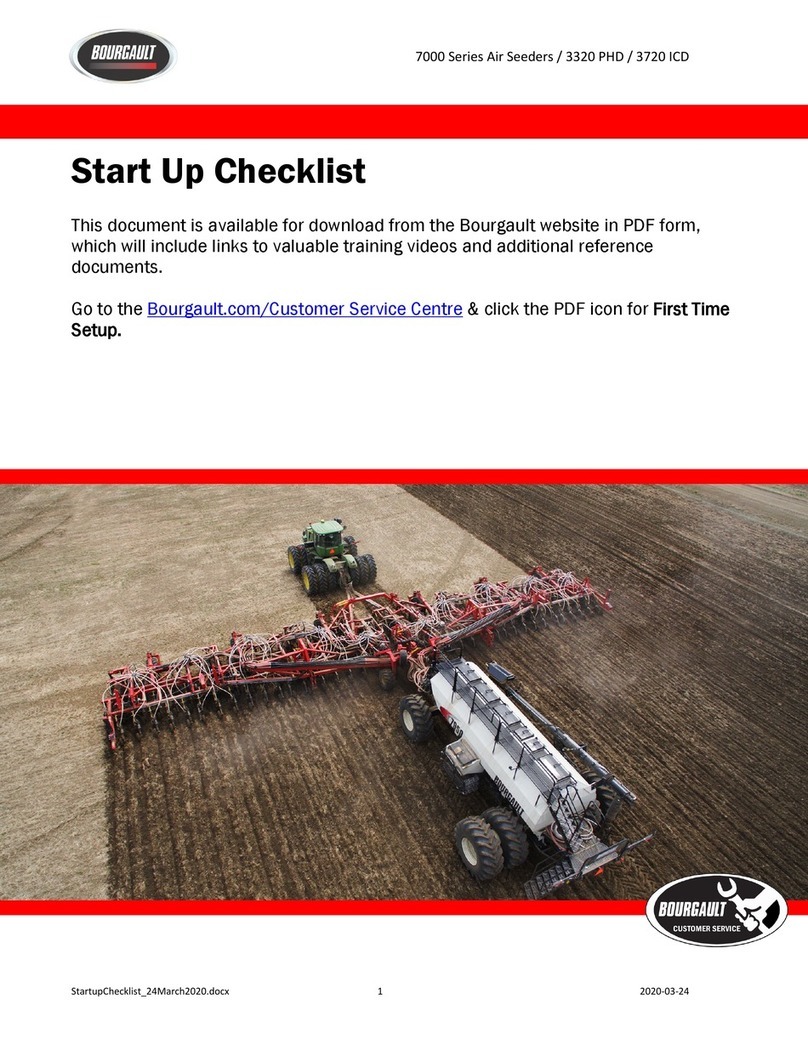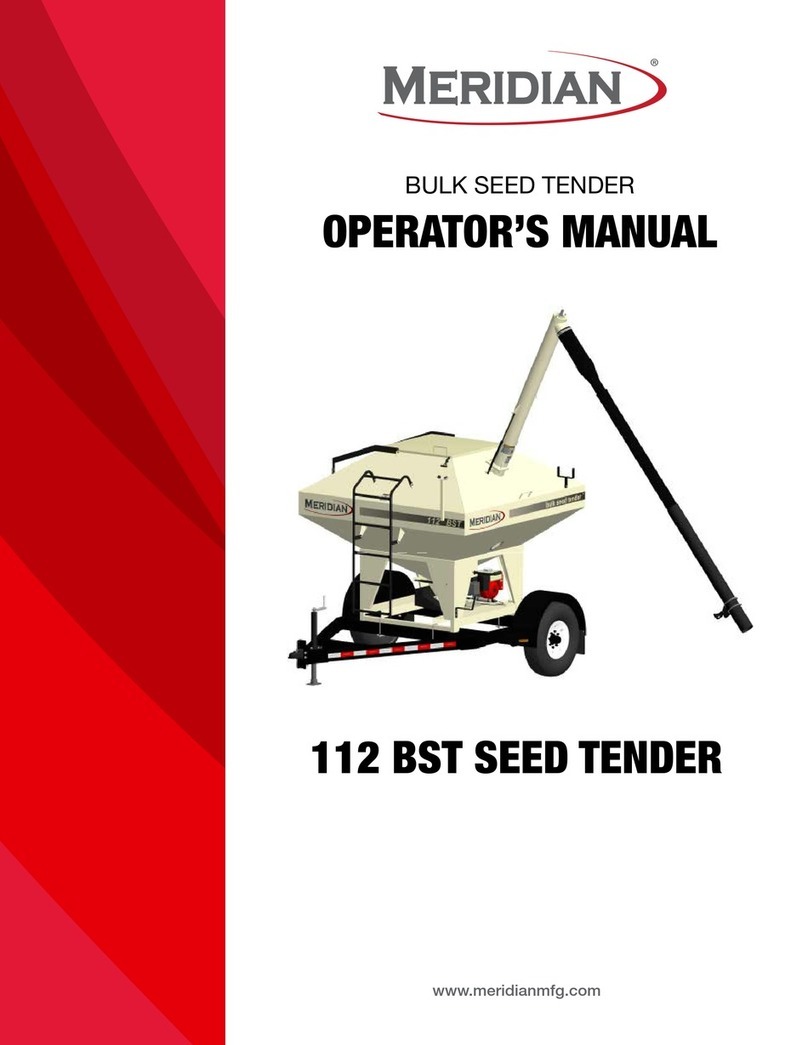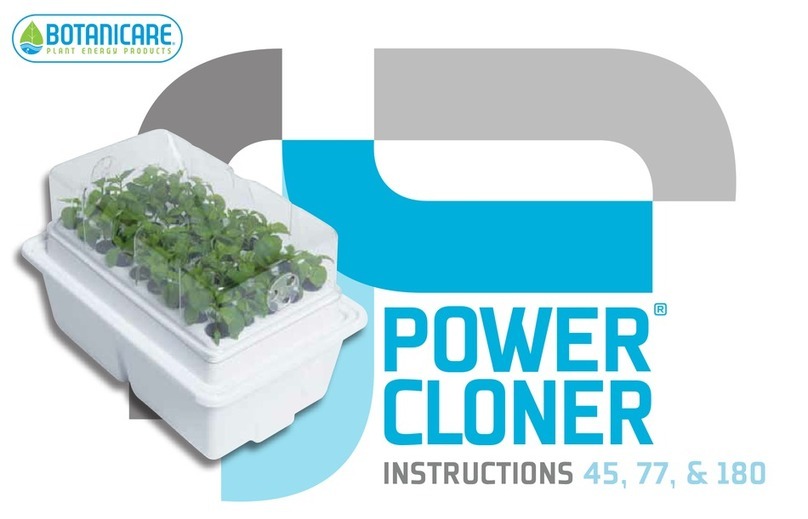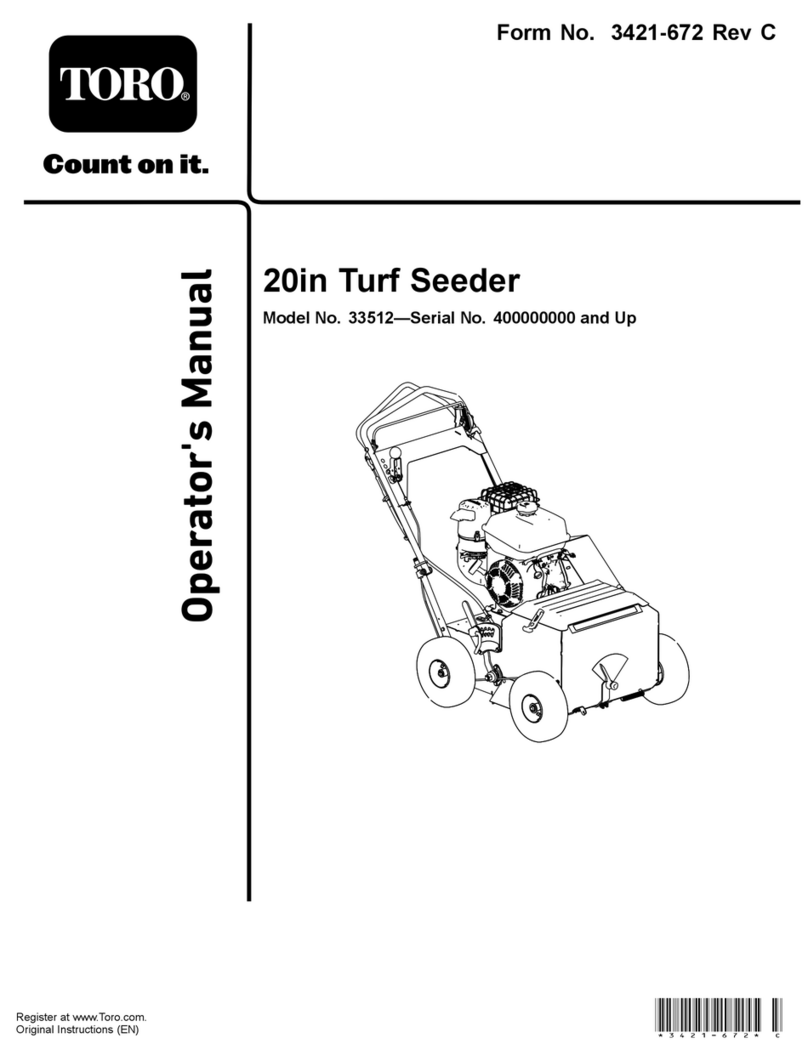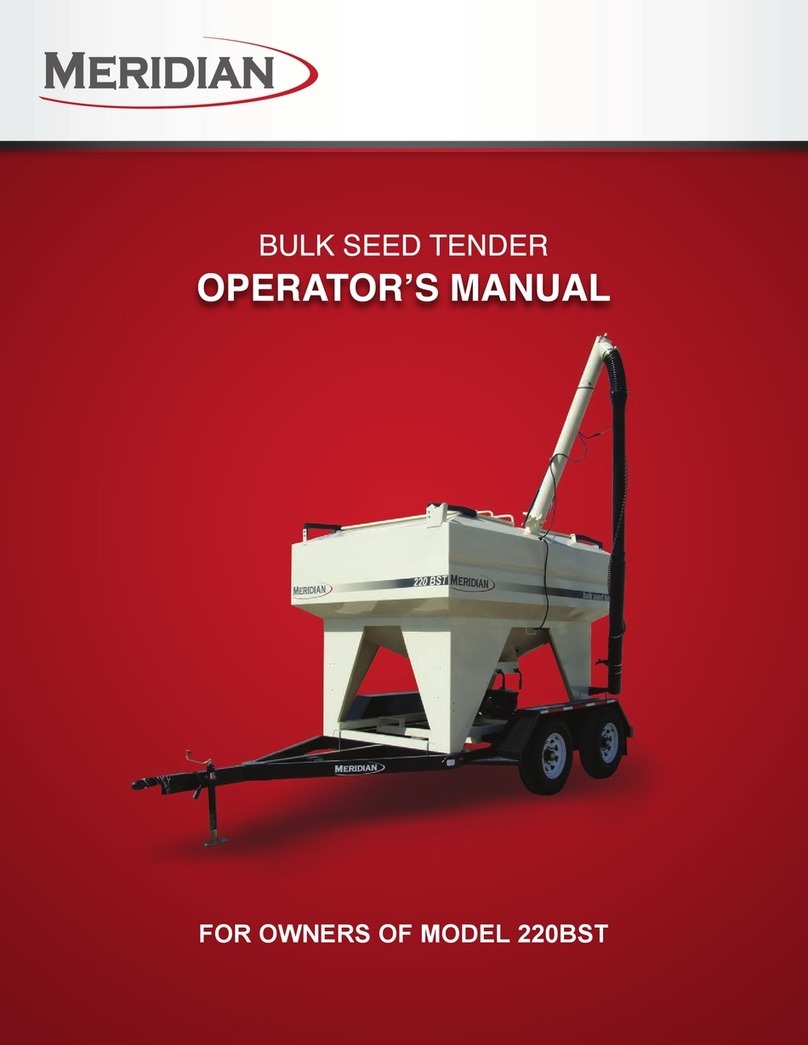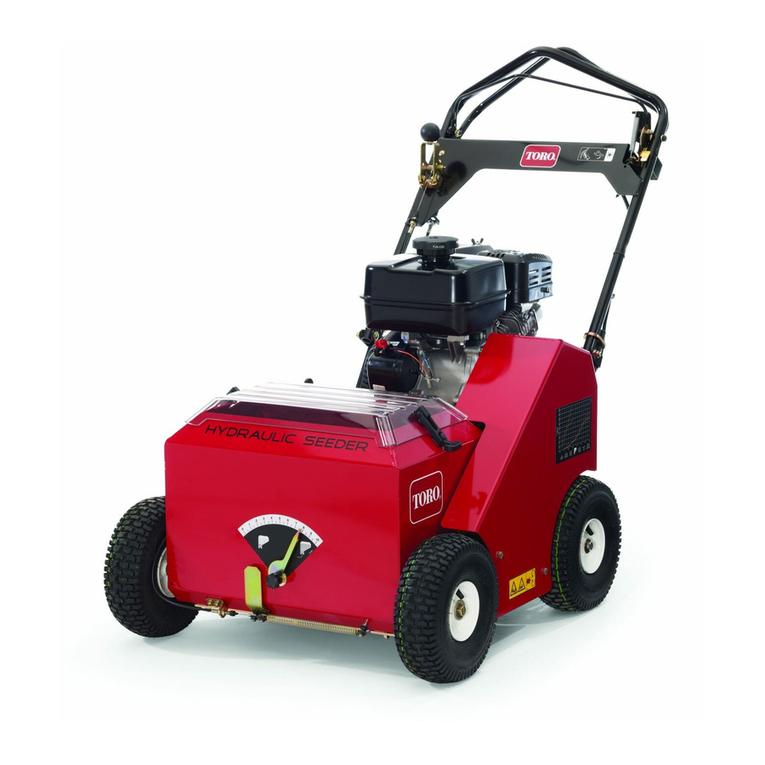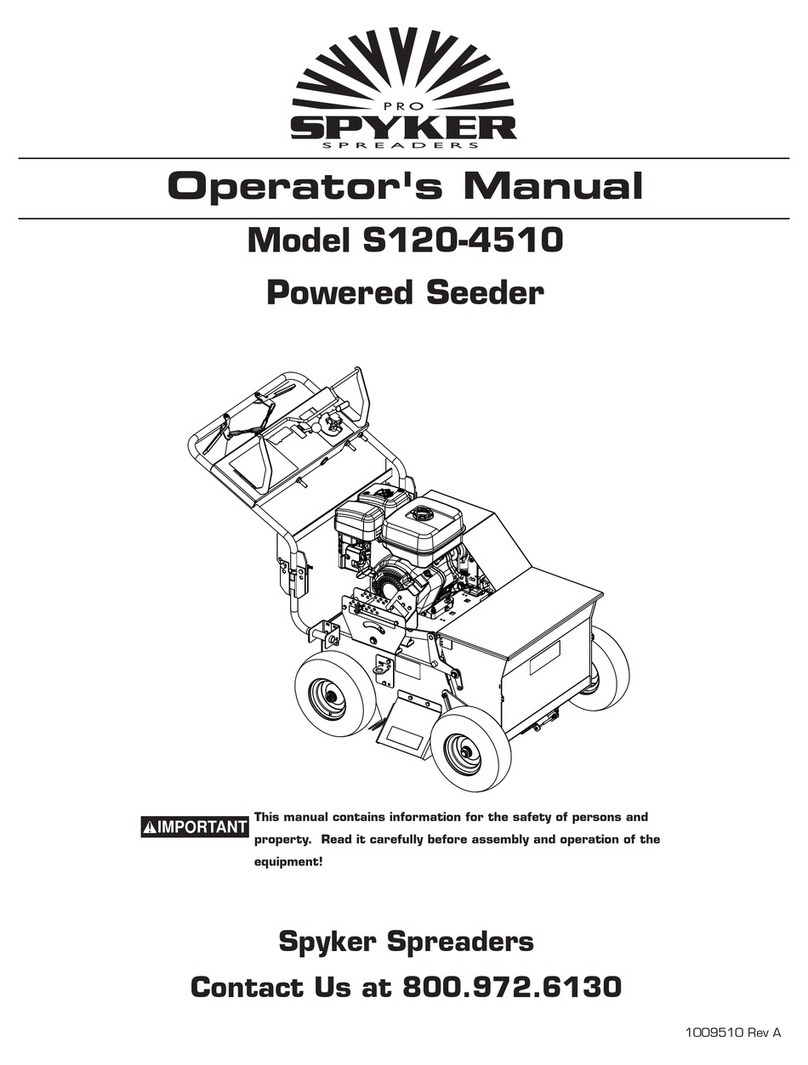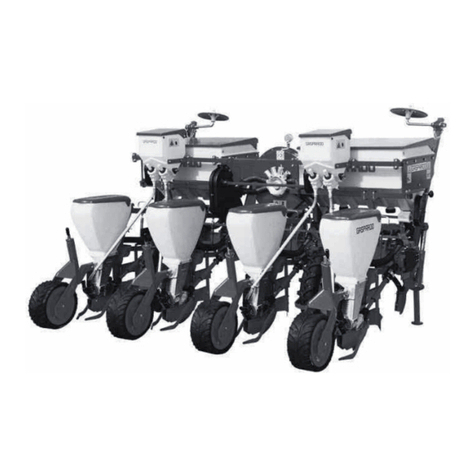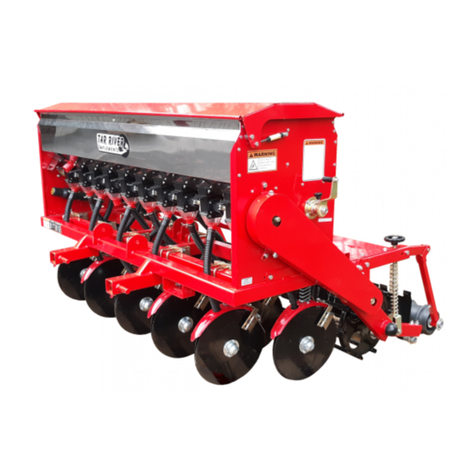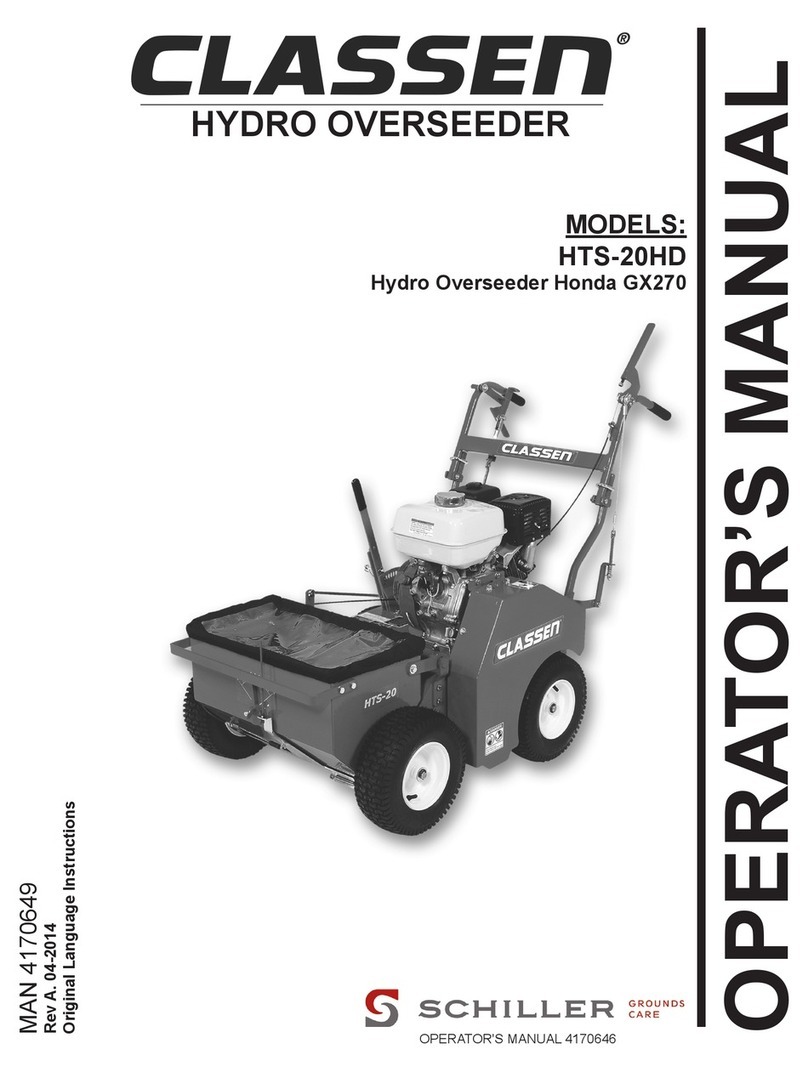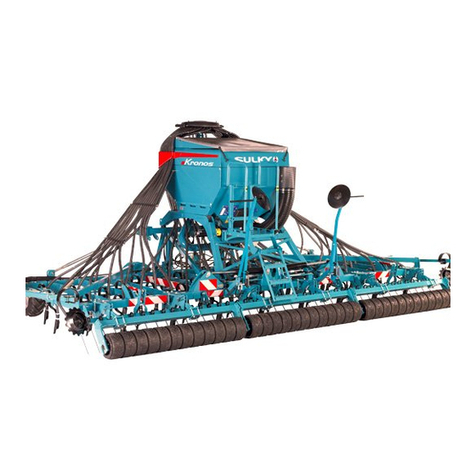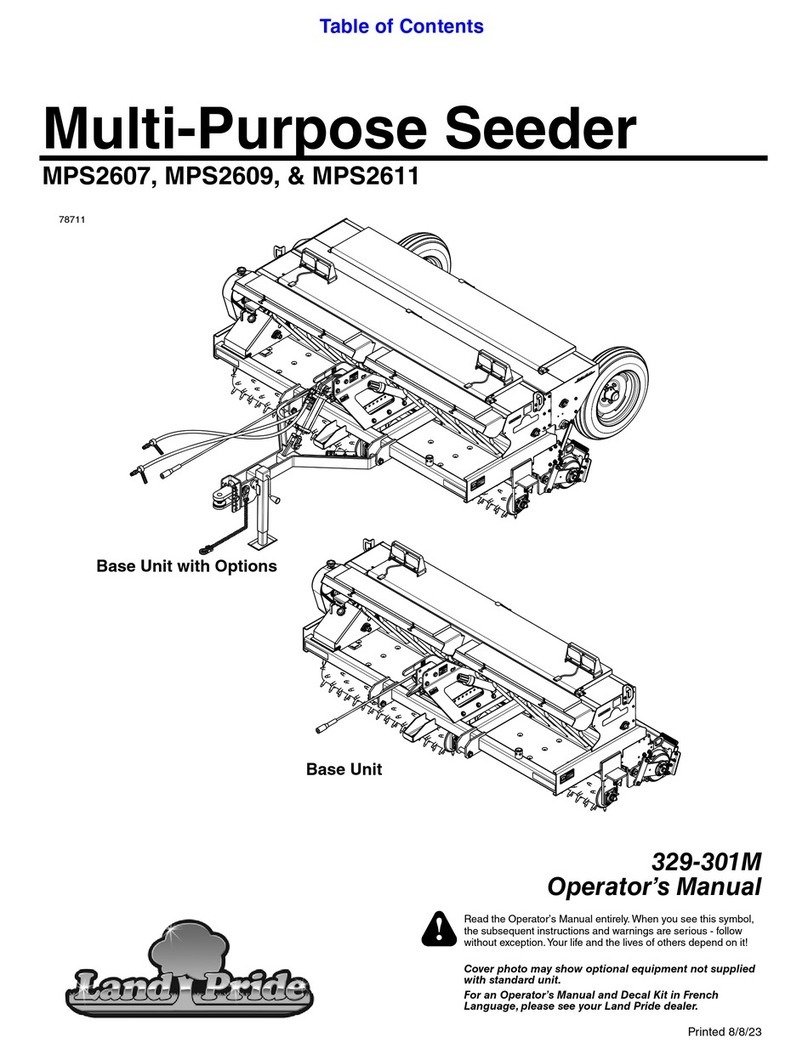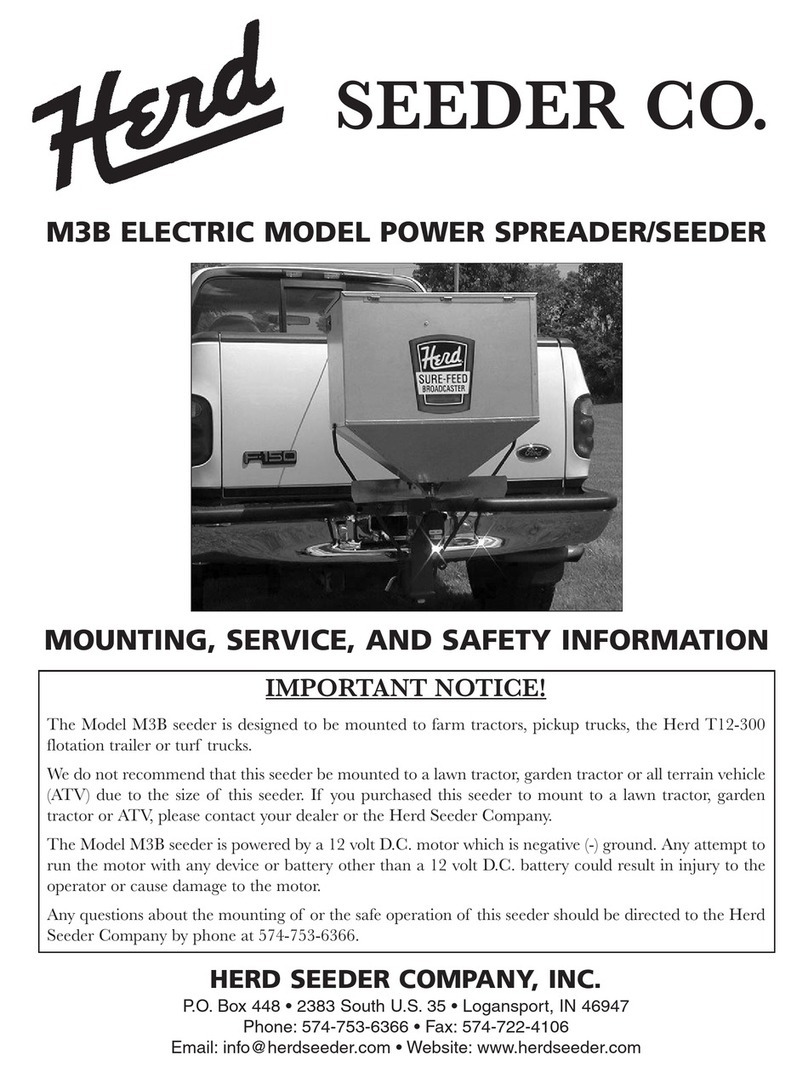
411-332Q Cover 1
2016-12-21 Cover 411-332Q
© Copyright 2015, 2016 All rights Reserved
Great Plains Manufacturing, Inc. provides this publication “as is” without warranty of any kind, either expressed or implied. While every precaution has been
taken in the preparation of this manual, Great Plains Manufacturing, Inc. assumes no responsibility for errors or omissions. Neither is any liability assumed
for damages resulting from the use of the information contained herein. Great Plains Manufacturing, Inc. reserves the right to revise and improve its products
as it sees fit. This publication describes the state of this product at the time of its publication, and may not reflect the product in the future.
Trademarks of Great Plains Manufacturing, Inc. include:AccuShot, Max-Chisel, Row-Pro,
Singulator Plus, Short Disk, Swath Command, Terra-Tine, Ultra-Chisel, and X-Press.
Registered Trademarks of Great Plains Manufacturing, Inc. include:Air-Pro, Clear-Shot, Discovator, Great Plains, Land Pride, MeterCone,
Nutri-Pro, Seed-Lok, Solid Stand, Terra-Guard, Turbo-Chisel, Turbo-Chopper, Turbo-Max, Turbo-Till, Ultra-Till, Whirlfilter, and Yield-Pro.
Brand and Product Names that appear and are owned by others are trademarks of their respective owners.
Printed in the United States of America
Table of Contents
Important Safety Information.................................................1
Introduction.............................................................................5
Document Family .......................................................5
Intended Usage.................................................................5
Using This Manual.............................................................5
Models Covered ................................................................5
Description of Unit.............................................................5
Definitions...................................................................6
Owner Assistance..............................................................6
Further Assistance.............................................................6
Assembly.................................................................................7
Tools Required..................................................................7
Pre-Assembly Checklist.....................................................7
Pre-Delivery.............................................................................8
Front Gauge Wheel Installation.......................................10
Raising the Drill...............................................................11
Wings: Do Not Lift with Hoist or Forklift....................11
3-Point Hitch Lifting Adapter ....................................11
Unloading........................................................................13
Lift Assist Wheel Installation............................................14
Gullwing Switch Adjustment Without Lift Assist ..............15
Gullwing Switch Adjustment With Lift Assist ...................16
Seeding Switch, Planters With Hydraulic Drive...............17
Planters Without Rear Lift Assist..............................17
Planters With Rear Lift Assist...................................18
Torque Values Chart.......................................................19
Tire and Wheel Information.............................................20
